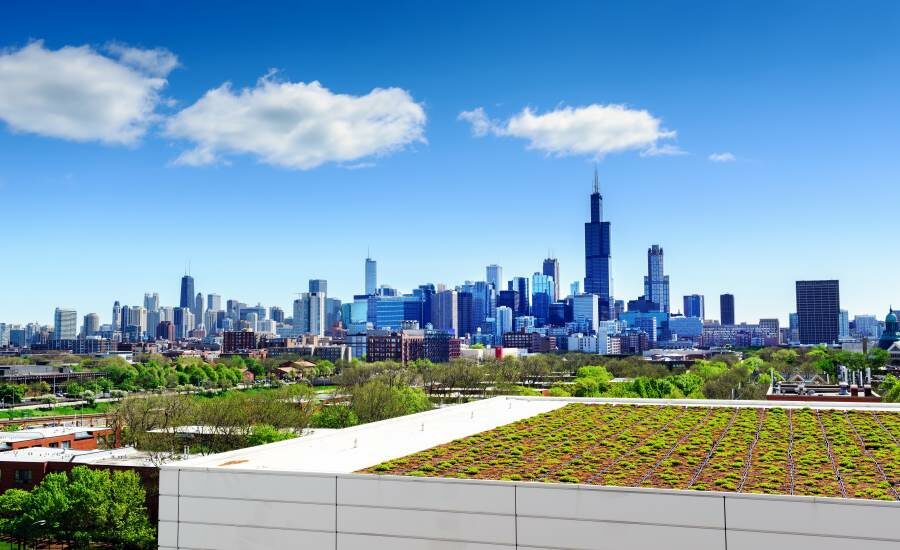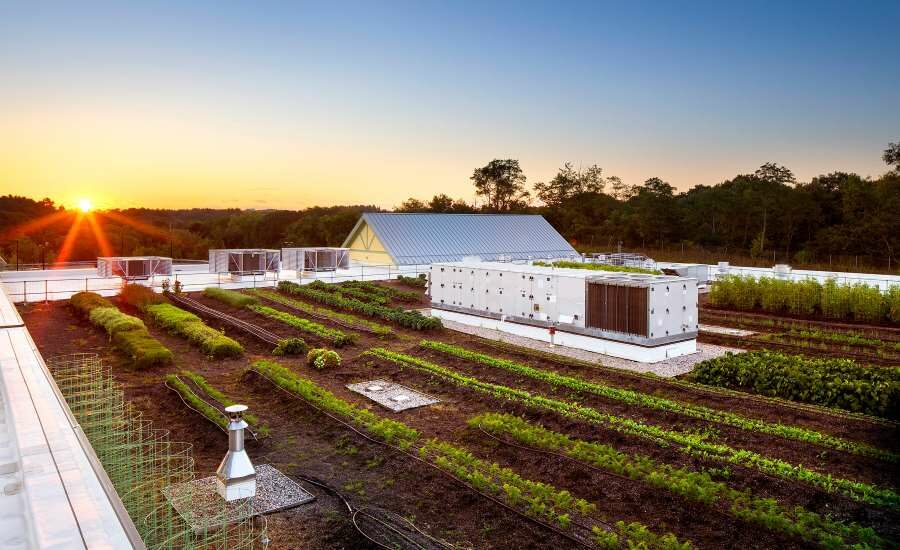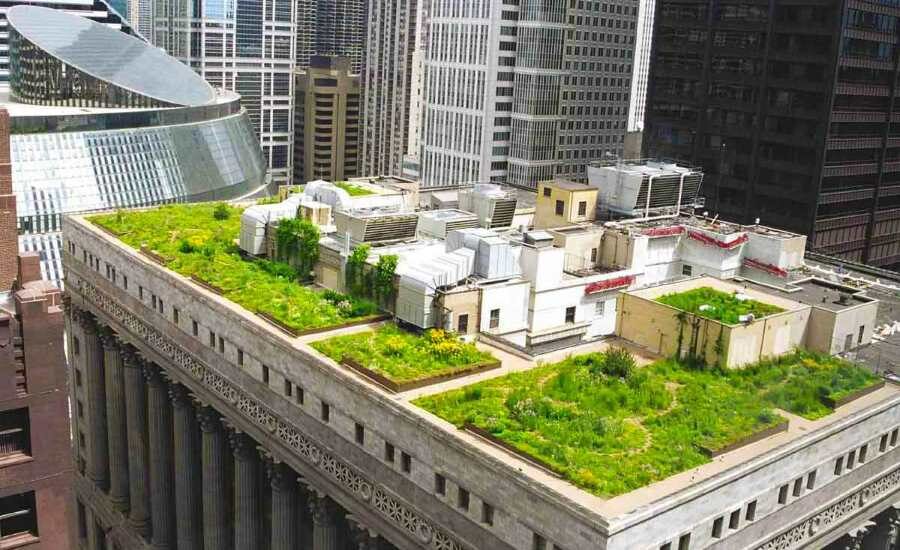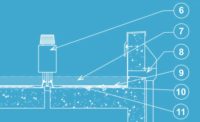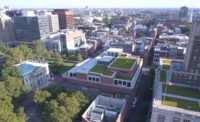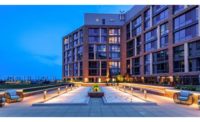From Chicago City Hall to Tokyo’s Imperial Hotel, green roofs are growing fast. They’ve been well established in Europe for years, and now have taken hold in the United States, with millions of square-feet of green roofs installed or in process since the early 2000s.
At the same time, growing development in U.S. cities is leading to increased levels of pollution. A main area of concern is the polluting of one of our most valuable resources: water.
Rapid Urbanization and Rainwater Management
In urban areas, there is a considerable amount of hardscape and not much ground to absorb rainwater. Urban rainwater runoff results from rain, snow and sleet that lands on rooftops, parking lots, streets, sidewalks and other surfaces. These impermeable surfaces do not allow water to infiltrate into the ground or be utilized by plants, both of which are key elements of the natural water cycle. Instead, they shed water, which then becomes runoff that eventually enters the city sewer system or is discharged directly to adjacent water bodies.
Most rainwater infrastructure in the U.S. was built 50-75 years ago and is not big enough to handle the amount of water now entering the systems. In response, cities across the U.S. have implemented new water management regulations.
In 2012, New York City’s Department of Environmental Protection (DEP) released a new storm water performance standard. The DEP published guidelines for design and construction experts to assist licensed professionals in the selection, planning, design and construction of onsite source controls that comply with the new rule. The guidelines were developed in consultation with the Department of Buildings, and feature guidance on siting, design and construction considerations for various rainwater control systems, as well as operation and maintenance recommendations. In our nation’s capital, the Department of Energy & Environment (DOEE) released a new guidebook on rainwater management in 2013 to control, prevent and provide remediation for sources of water pollution to District of Columbia waters and the Chesapeake Bay.
The Green Roof Solution
Green roofs are an effective approach to managing rainwater runoff from rooftops. As a result, they are growing in use in urban areas where space constraints limit the use of other water management practices.
Green roofs can significantly reduce the amount of rainwater that would otherwise run off an impervious roof surface. A green roof is composed of a permanent rooftop planting system containing live plants in a lightweight engineered soil medium. The layer of greenery on the roof absorbs rainwater like a sponge, slowly releasing it through evaporation and plant use. As a result, much less water runs off the roof compared to conventional rooftops, reducing stress on city rainwater and sewer systems.
“Some green roofs will retain one gallon of water per square-foot,” said ZinCo USA Green Roof Systems National Sales Manager Nicholas Smith. “That’s 20,000 gallons of water retained on a 20,000 square-foot building. Other green roof solutions can retain up to four gallons of water per square-foot. Research also indicates that peak flow rates are reduced by 50 to 90 percent compared to conventional roofs.”
Cities Like Green Roofs
Some U.S. cities now offer benefits to building owners for the installation of a green roof and some even mandate green roofs on new buildings. San Francisco was the first local jurisdiction to require green roofs or solar panels on new buildings as of January 2017. Denver followed in November 2017, by voting in favor of the nation’s most stringent mandate for rooftop gardens. The requirement will affect both the developers of larger new buildings and the owners of many existing structures when they undergo roof replacements. The campaign persuaded voters that Denver should require all new buildings of 25,000 square feet or larger to devote a portion of the roof to gardens and other green coverings that would absorb rainfall and reduce heat. Today, the voter-approved Green Roof Initiative is still being worked on at Denver’s city hall.
An early adopter of green roofs, Washington, D.C. established the RiverSmart Rooftops Green Roof Rebate Program to promote the voluntary installation of green roofs for the purpose of reducing storm water runoff and pollutants. The program offers a rebate of $10 to $15 per square-foot for voluntary installations of green roofs around the District. Today, there are more than 3 million square-feet of green roofs in Washington D.C.
“As a result of these new government regulations, as well as cost and environmental benefits, a growing number of building owners are requesting green roofs for their commercial and residential structures,” said Smith. “They are easy to incorporate into new construction and can be used on many existing buildings.”
Constructing an Effective Green Roof
As green roofs absorb rainwater and other precipitation, it is especially critical to waterproof green roofs. Unlike normal exposed roofs that are dry at least some of the time, green roofs may be permanently wet due to the necessary irrigation systems. This is why green roofs require high-quality waterproofing that is root resistant.
Often architects specify liquid waterproofing for these types of applications. Years ago, liquid waterproofing work had to be done by applying heat, but today there are cold-applied waterproofing solutions that are safer to use. When installing a green roof, it is important to look for options that have a fast curing time, so that other trades can continue their work quickly after the waterproofing membrane is applied. These waterproofing solutions also need to be durable and resistant to puncture, roots, chemicals, moisture, fungus and micro-organisms. You can assess durability by inquiring about the products’:
• Tensile strength—the resistance of a material to breaking under tension.
• Shore A hardness—a measure of the hardness of a given material or how resistant it is to permanent indentation.
• Elongation—the distance the membrane will stretch from its original size to the point at which it breaks.
In a green roof assembly, the waterproofing is spray- or hand-applied prior to the insulation layer being applied. This way, the waterproofing membrane can bond tightly to the underlying structure to prevent water infiltration. Once it cures, it becomes a flexible membrane that is seamless to help keep the roof safe from leaks. This seamless membrane becomes an all-in-one waterproofing layer and root barrier. This unique solution saves the contractor time and makes for a higher quality installation versus systems requiring a dedicated root barrier.
Not only do green roofs offer huge benefits in rainwater mitigation, but they also provide beauty and great recreational opportunities. The success of green roofs globally is creating a movement within cities, government and the building industry. Special task forces, programs, mandates and rebates are being created to encourage the use of green roofs as a solution to alleviate the urban rainwater management. With this support and continued concern for our environment, it is clear that green roofs are the future of our urban structures.
